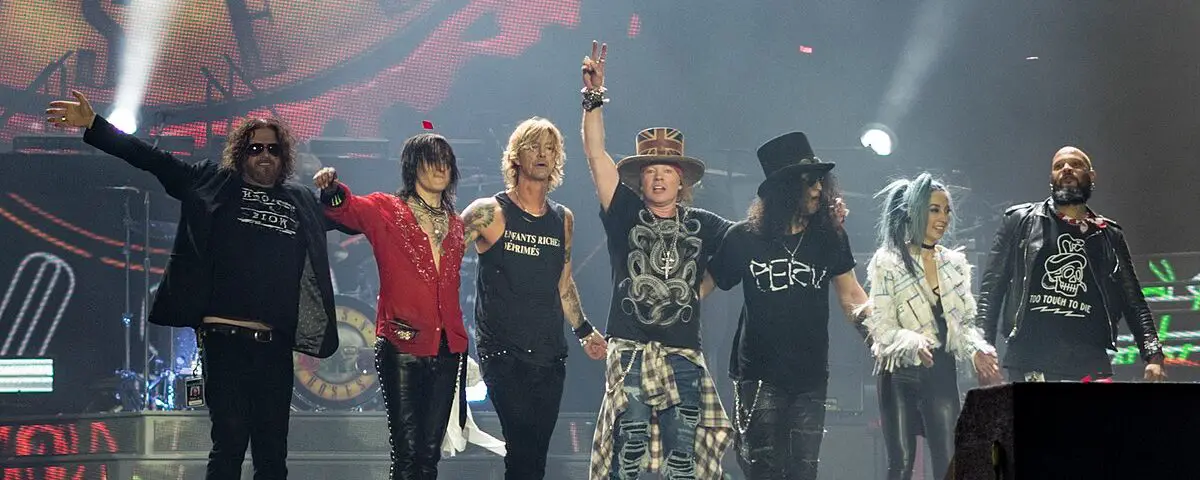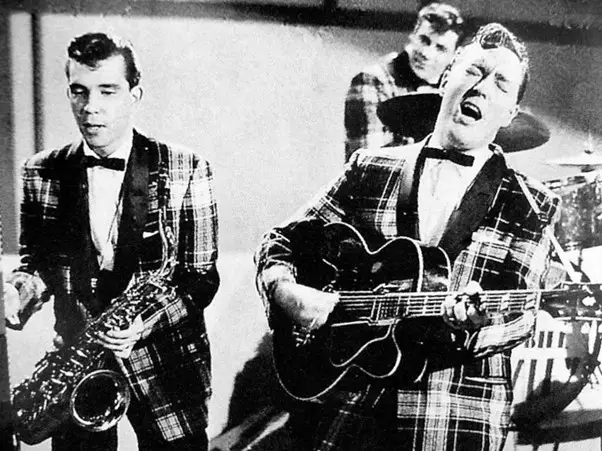Do you know the history of Rock music? With its roots in 1950s Rock and Roll, Rock music evolved from the blending of Blues, Rhythm and Blues and Country music. White musicians developed it in the 1960s by adding Jazz and Boogie-Woogie. They experimented with electric guitars and other unusual instruments.
Early white Rock musicians were heavily influenced by black Blues musicians. They were aided by the sound of a steady drumbeat and electric guitars. And Rock and Roll musicians like Chuck Berry, Little Richard, Jerry Lee Lewis, Goree Carter and Jimmy Preston paved the way for Rock music. They played a crucial part in creating a billion-dollar industry from nothing.
The Rock and Roll era which began after the end of World War II, became part of a youth movement in its early days.
As the post-war young looked for new ways to rebel, they found it in Rock n Roll. It was seen as a lifestyle choice, more than a musical style. And was synonymous with drugs, alcohol, sex, and a party lifestyle.
The History of Rock Music
In the history of Rock music, each decade’s environment has influenced the evolution of mainstream Rock. While its roots are a complex tangle, Rock music has always incorporated a mix of styles.
Let us explore each decade starting with the 1940s.
Bigger Platforms given to Black Musicians in the 1940s
In the late 1940s, African American musicians created what came to be known as Rock and Roll.
Early Rock music was a modern take on Blues and Jazz, with a heavy beat, driving guitars, and often sexual lyrics.
Black Musicians Targeted White Teenagers
Its primary audience was white teenagers. And with its raunchy content and hard-edged music, Rock n Roll was the ideal medium for the young. Many of the youth wanted to rebel against the conservative traditional values of the 1940s.
Even though it outraged their parents, they had enough spending power to buy records. And they had found a way at last.
For black artists like Bessie Smith, Blind Lemon Jefferson, and Charlie Patton this meant a larger audience. More people heard them, and the revolution gave these musicians more recording time and stage opportunities. By the end of the 1940s record companies, began marketing their music to a very big audience. And it turned the earlier race records into a new genre called Rhythm and Blues.
Black DJs and Club Music Popularised Rock In the 1950s
By the 1950s, rock music had become mainstream club music, thanks to DJs in cities like Memphis and Nashville. DJ Alan Freed in particular, is credited with this shift in Cleveland. It inspired other clubs and DJs to play the songs just to keep up.
For suburban teenagers, the stomping beats and sexual lyrics were completely foreign. Pretty soon rock became synonymous with freedom, liberation, and a carpe diem attitude that appealed to the “free spirits” of the 1950s.
When the Swinging Sixties arrived
By the start of the swinging 60s, Rock and Roll had spread like wildfire. And the music of African American artists like Chuck Berry and Little Richard was being played in every club.
Influenced by these Rock and Roll legends, Elvis Presley began writing songs like Heart Break Hotel and he was soon known as the King of Rock n Roll. His up-tempo songs combined Country Rock with Rhythm and Blues.
Presley’s provocative performances and sultry voice made him an instant sex symbol. His mainstream success repackaged what had previously been considered an African American style onto a larger stage.
Inspired by Black artists, British Bands soared to Global Fame
Now catering to a far larger demographic, Rock n Roll artists struggled to create content that would appeal to a greater number of fans. The history of Rock music tells us Rock n Roll split into two new categories to cater for the demand:
- Pop music with its lighter, bubbly lyrics and mass appeal, and
- Rock music with hard, gritty, sexual undertones and niche appeal
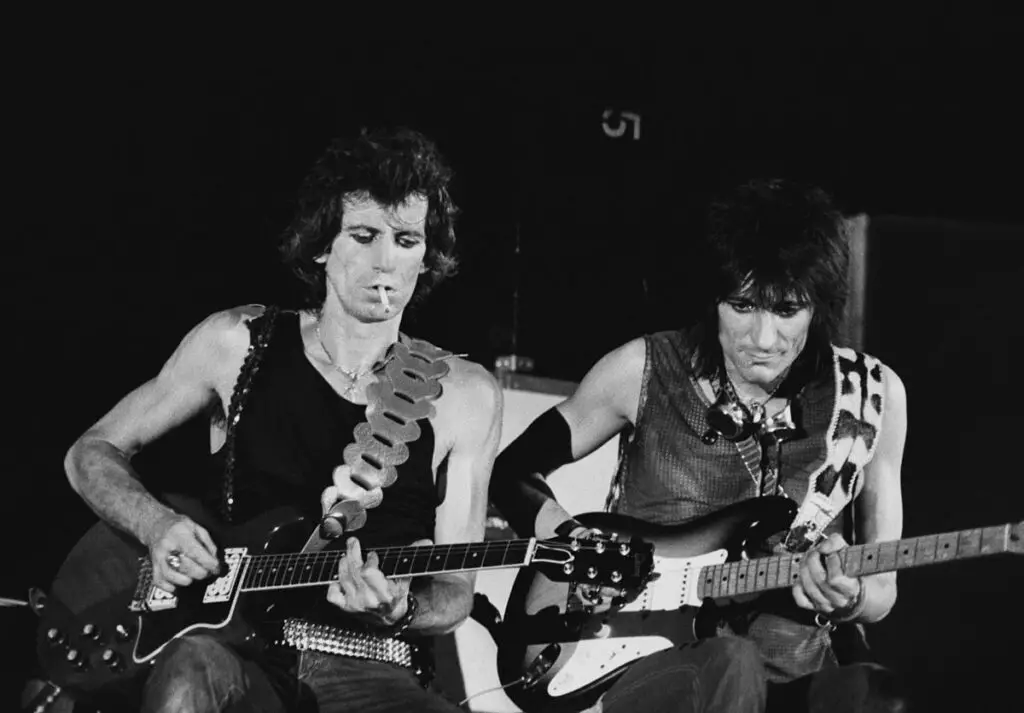
The Atlantic Crossing
The American market was 5 times bigger than the UK. Talented British musicians saw the possibilities, and many flew West to tour the USA. Some made it big, and by then, Rock music had spread across the Atlantic from America to England and Europe.
The 1960s were marked by the birth and evolution of British bands. Liverpool-based Beatles and London-based Rolling Stones had already tasted success in the States.
The 1960s were soon Swinging
But Rock n Roll had always reflected society, and in the 1960s that meant hallucinogens, hippies and free love.
So when the Beatles recorded Sgt. Pepper’s Lonely Hearts Club and Jimi Hendrix followed it up with Are You Experienced no one was surprised. But perhaps the biggest moment of the 60s in the history of Rock music was Hendrix’s performance of The Star-Spangled Banner protesting the Vietnam War.
Throughout the swinging 60s Rock gained an increasing global platform. And although the pioneers of the genre were African Americans, white artists dominated the Rock sound.
Bands like the Beatles and the Rolling Stones were influenced by black musicians like Chuck Berry and Little Richard. John Lennon listed Smokey Robinson as one of his biggest inspirations. And the more Blues driven Stones took songs from Muddy Waters.
Rock Music Sub-Genres Take Over
By the 1970s, rock music was a multi-million dollar industry with as many subsets as there were musicians. This meant that the Psychedelic Rock of the 60s gave way to multiple sub-genres.
Hard Rock
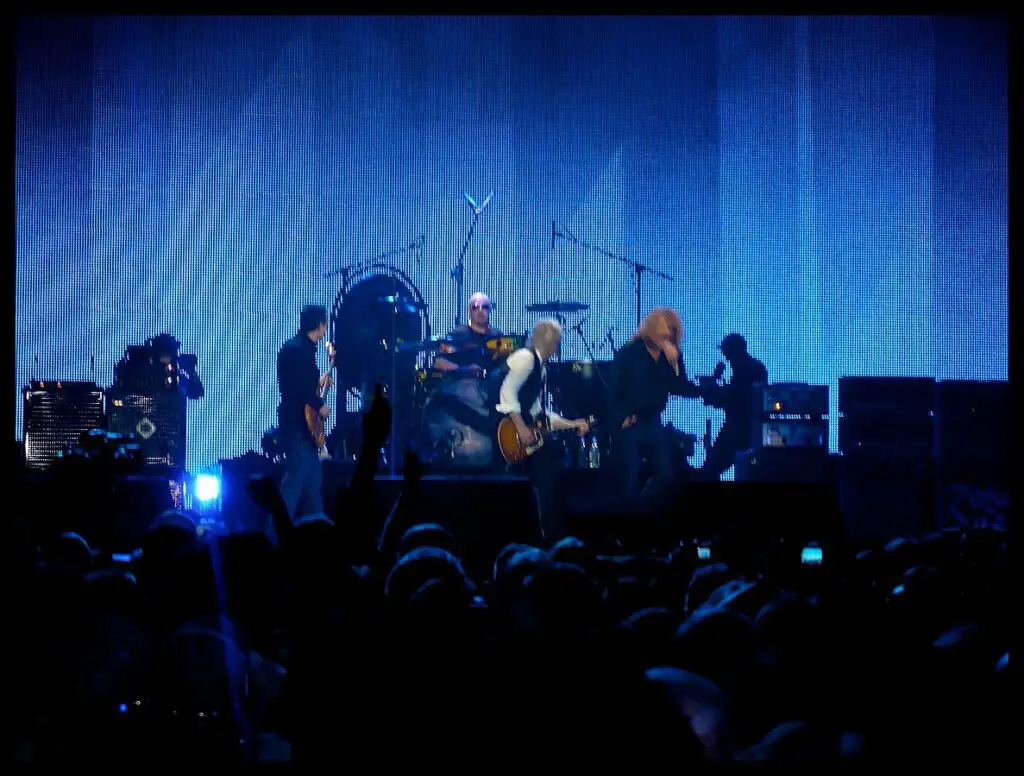
With its aggressive vocals, heavy beats, and electric guitars, Hard Rock stayed true to the Rock legacy of the 60s. Bands like Led Zeppelin, AC/DC, and Black Sabbath led the charge with albums like Physical Graffiti, Highway to Hell, and Paranoid.
Soft Rock
A slower beat, crisp vocals, and aesthetic sonic quality made soft rock music stand apart from the other subgenres of Rock. The music was less intrusive, and Soft Rock put the spotlight on the vocals and lyrics.
Bands like Fleetwood Mac, the Eagles, and Al Stewart produced albums that became massive hits. Rumours, Hotel California, and Time Passages explored themes like love, loss, and fear. They are have remained classics since their releases in the 1970s.
Glam Rock
With the larger fan base of the 1970s, artists were now performing in huge arenas on international tours. Glam Rock became big as artists began to focus more on the performance appeal of their music.
Perhaps the most popular example of Glam Rock is David Bowie’s Ziggy Stardust. The album centres around a flamboyant, gender-bending, alien lifeform. He crash lands on earth and begins to embody the spirit of the Rock n Roll lifestyle. This type of narrative building and character-centric storytelling was typical of Glam Rock music.
Progressive Rock
Prog rock music took on classical influences and compositional techniques. This type of Blues-Rock music took its cues from Jazz and Folk to form an eclectic mix of sounds. The purpose of Prog Rock was to push the musical boundaries of Rock and create art.

Albums like Pink Floyd’s Dark Side of the Moon focused on narrative building, fantastical lyrics, and technical perfection. The music explored themes like time, death, mental illness, and greed. An expression of the artists’ struggles and lives.
Progressive Rock is often associated with a shift in the music industry. Musicians were allowed greater artistic freedom by their labels. Bands would often take a few months off from touring to simply experiment and record in isolated settings.
Art Rock
A more avante-garde style than Prog Rock, Art-Rock focused on musical experimentation, conceptual themes, and a high level of production. While its philosophical themes were similar to Prog Rock, Art Rock unconventional rather than classical in composition.
David Bowie, Pink Floyd, The Moody Blues, and The Velvet Underground created Art-Rock music with long instrumentals. They had layered metaphors and an aesthetic sonic quality. This style rejected the more pop music elements and prided itself on being a niche sound.
Punk Rock
By the mid-70s, Punk Rock was all the rage, with its loud popping music, distorted riffs. Power chords, and aggressive, shouted vocals left a mark on the history of rock music.
The most popular of the Punk Rock bands were the Sex Pistols. Their public appearances included swearing on national talk shows and fights in bars.

They weren’t just anarchist and nihilist, they were also anti-establishment, with songs like God Save the Queen scandalising the masses. Other big names in Punk Rock included The Clash, The Slits, The Ramones, The Stooges, and Iggy Pop.
For these bands, it wasn’t just about the music. Punk Rock was very much an aesthetic movement. From their wild hair, ragged clothes, and body piercing, punk bands repackaged their extreme nonconformity and sold it as a lifestyle choice.
It was rebellious in the extreme and repulsive to many, but they did create some memorable music.
Heavy Metal
Perhaps the most commercially successful development of Rock was Heavy Metal. Metal was a progression from Punk with spectacular stage shows, violently amplified vocals, distorted electric guitars and overpowering sound. Bands like Black Sabbath and Iron Maiden set themselves apart with their occult content and horror-inspired themes.
Inspired by history, mythology, literature, and other social ideals these bands combined their violent sounds with video content and merchandise.
The 1980s brought New Audiences
By the 80s the kids who had grown up listening to rock in the 1960s were adults. And many of them enjoyed the musical development, becoming fans of new genres.
That meant rock music had a bigger market than ever before.
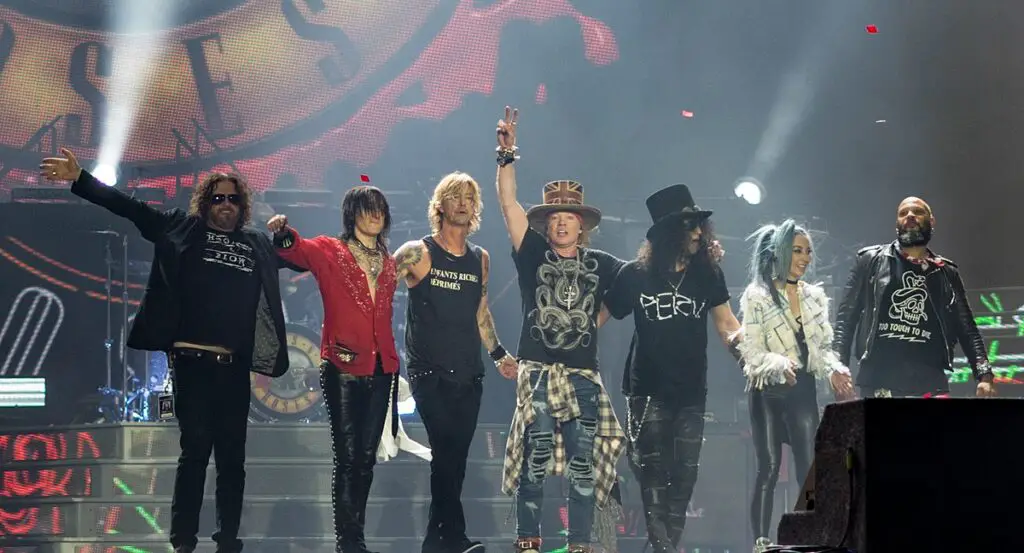
Musicians were no longer just catering to teenagers and broke college students. Adults in their 30s and 40s with jobs and steady income sources were now major music buyers and concert goers.
The Emergence of Stadium Rock
This led to the rise of stadium rock with bands like Guns N Roses and stalwarts like Led Zeppelin and Pink Floyd selling out huge arenas which later defined the history of Rock music.
Many of the most popular musicians across the genres, from Hard Rock to Prog Rock began to rank on the Billboard charts and find mainstream success. Even alt-rock bands like Metallica found their niche audiences and unique sounds.
One of the popular new wave genres was Acid Jazz, which began in London, combining Jazz, Funk, Soul, and Hip Hop into an eclectic mix that had audiences mesmerised. Black bands like A Tribe Called Quest pushed the boundaries of Rock, creating a unique new sound that is credited with influencing later Rap and Hip Hop.
Now that Rock with its many subsets was truly international and accepted, new wave post-punk bands like The Police and Blondie picked up new influences from other genres like Reggae and Hip Hop.
With the 1990s came Modernisation

Alternative Rock bands like Nirvana and Pearl Jam dominated 1990s Rock music, with their angsty lyrics and Hard Rock sounds. Their music alternated between mellow verses and loud choruses, with songs such as Smells Like Teen Spirit topping the charts internationally.
The Grunge era fused together elements of Punk Rock and Heavy Metal to create a new electric sound.
Most of the music of this genre addressed themes like abuse, trauma, alienation, isolation, and negative self-imagery, making it immensely popular among younger audiences.
By the end of the 1990s Grunge gave way to Pop-Rock bands like Fall Out Boy and Emo Rock bands like Paramore and My Chemical Romance.
These newer bands looked back at the Classic Rock era with a nostalgia that reintroduced their younger audiences to the core of Rock n Roll.
Final Thoughts
From its earliest days, Rock n Roll was formed as a way for artists to express themselves, their fears, and trauma. Throughout the history of Rock music, this genre has evolved to address pressing issues and hold up a mirror to society. The true spirit of Rock music is in its ability to evolve with the times, and with newer artists combining Rock with Rap and indie genres, its legacy lives on.

